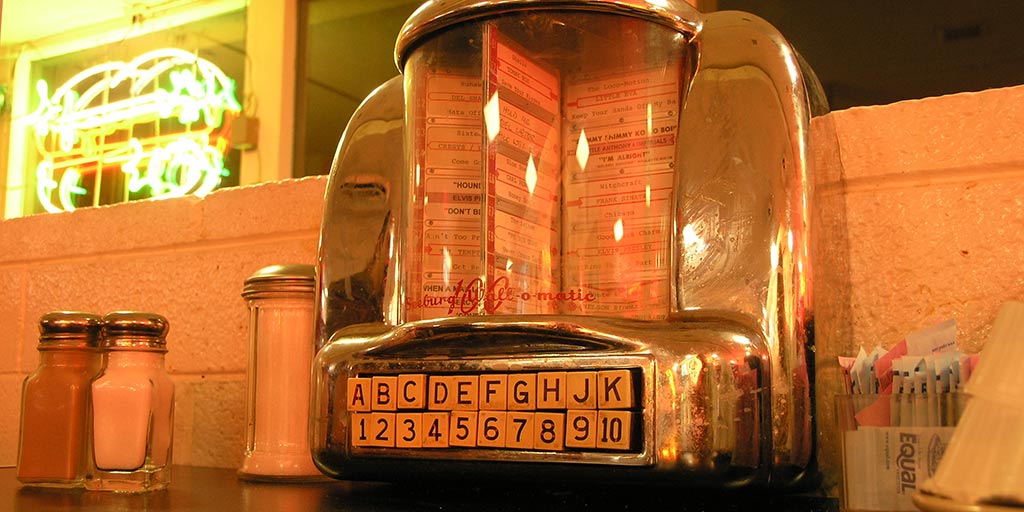You think it’s going to be great. Nothing to compete with conversation or to distract from the food. People will be able to hear each other and they’ll thank you for it. They might even leave you a glowing review. “Why can’t all restaurants be like this one? Hurrah!”
Then, reality sets in.
Silence, believe it or not, is very uncomfortable.
The fact is, playing music in your establishment can actually improve the experience of dining for your patron. Played in the appropriate way, music relieves awkwardness and social anxiety, helps cloak what those at the next table are discussing, and provides a relaxing backdrop for the type of pace you want to set for their meal.
What kind of music should my restaurant play?
Indeed, what you choose to play can have a profound effect on the rate of your table turns. Research compiled at the University of Oxford shows that:
- loud music with a fast tempo encourages diners to eat faster, but also enjoy their food less, and perhaps even have less of an appetite.
- soft music with a slower beat encourages diners to slow down and stay longer — resulting in less table turns — but also typically order more.
- high notes are generally associated with and can accentuate the sensation of sweetness.
- resonate notes can provoke sensations of bitterness.
Much of these results are part and parcel of our parasympathetic nervous system. The more agitated we are, the more likely a sense of “fight or flight” kicks in, lowering our natural appetites.
Hour of day is also a factor in deciding what type of music your restaurant plays. Sure, it may be advisable to slow down the tempo for your customers during prime dinner seating (6:00 – 8:00 p.m.), but during Happy Hour (4:00 – 6:00 p.m.) having music with a faster tempo, played slightly louder than normal, can bring some energy to your atmosphere. There’s also some research that shows increasing volume can increase the number of drink purchases in a given period of time.
Once dinner service starts to wind down (8:00 – 10:00 p.m.), increasing the tempo, but not the volume, from where it was set during primetime can help servers subtly wrap service and finish up last seating for the night.

No matter what style of music you play, make sure it reflects your restaurant’s personality. That is not to say your personality or your staff’s — or even your customers’ — but the personality of your restaurant brand itself. Ask yourself:
- What is the energy level of our service?
- What type of person would cook our menu in their own home?
- What type of person does the decor reflect?
- And what kind of music do THEY listen to?
That caricature you create in your head after answering the questions should be able to inform your music choices.
How loud is too loud for restaurant music?
In truth, many restaurants and bars play music far too loud for the space they occupy, which leads to the incorrect conclusion that silence is better. The trick is simply to maintain a decibel level that is comfortable for your customers (and employees, who have to spend far more hours exposed to it).
A noise level of about 70 decibels (including ambient sound) is going to be right for your average restaurant, with bars able to sustain between 75 and 80 decibels comfortably. The former is perfect for maintaining conversation, but blocking out undesirable sound as “background noise.” If you can’t just ambient sound well, sound meters can be purchased online fairly inexpensively for around $30.

Ultimately, the environment of your restaurant will impact the noise level more than your sound system will. Do you have a lot of hard, sound-reflective surfaces that could produce echoes and reverberations? Can you outfit your space with fabric chairs, draping, canvas paintings, or professional sound dampeners in order to absorb some of the noise? Without these adds, the sound of silverware hitting the floor might be disruptive, never mind the Barry Manilow on the speakers.
So, how do I actually play music at my restaurant?
Curating a list or subscribing to a music service designed specifically for restaurants is far preferable than more consumer-based means of music play. Non-subscription Pandora and the radio will both include commercials and chatter that’s not just disruptive, but also potentially in conflict with your brand. How eager are you to have patrons hear a commercial for McDonald’s when they sit down in your dining room?
Most restaurants execute play lists on their laptop computers, streaming those songs through an amplifier (and perhaps a mixer first, depending on the sophistication of your set-up and needs of your business), and out through speakers mounted in various locations in the restaurant.
If you plan on streaming music from an internet source, be sure to hook any equipment up via hard wire ethernet, not over wifi. Infrequent blips or pauses can be psychologically disruptive or annoying for your customers (and your staff) during service.
When choosing speakers, be very careful of two distinct things: size and weight. Many brands purport to offer high quality sound in a smaller, less distracting sized package, but the highest quality bass audio requires a wider physical space to accommodate longer wavelengths. Heavier speakers, while a chore to install and support, are far more stable than lighter weight equipment that will vibrate more easily and disrupt the sound in the process.
Not sure how to create a playlist or what equipment to purchase? Investigate online or hire an expert to come in and get you set-up. The potential rewards to your bottom line are worth it.
Want to explore more about renovating your restaurant in the new year? Download our free eBook “The Secret to Remodeling Your Restaurant” now!






